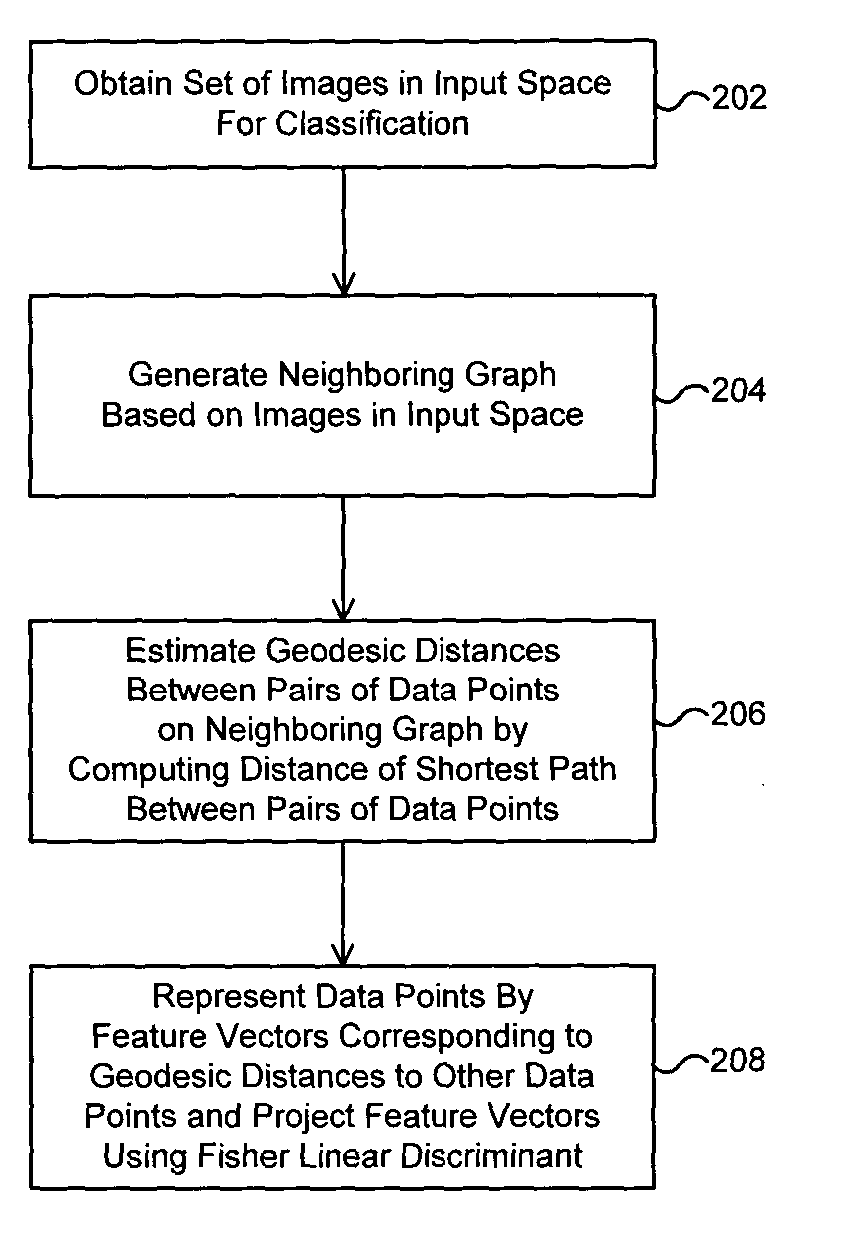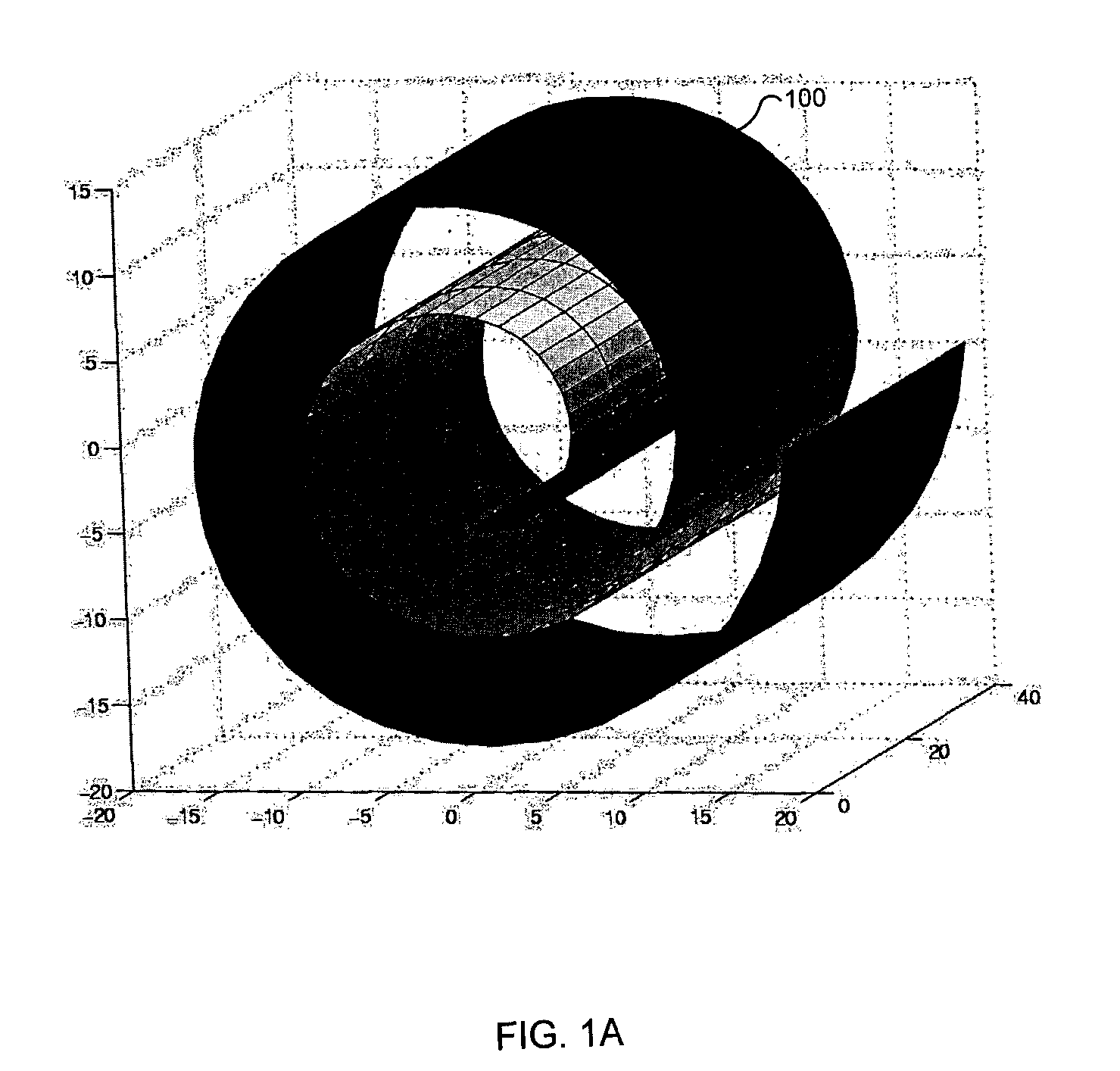Extended Isomap using fisher linear discriminant and kernel fisher linear discriminant
a technology of kernel and isomap, applied in the field of extended isomap using fisher linear discriminant and kernel fisher linear discriminant, to achieve the effect of maximizing the distance between cluster centers
- Summary
- Abstract
- Description
- Claims
- Application Information
AI Technical Summary
Benefits of technology
Problems solved by technology
Method used
Image
Examples
first embodiment
[0028] FIG. 2 is a flowchart illustrating a method of representing images for pattern classification by extended Isomap according to the present invention. The extended Isomap method of FIG. 2 employs Fisher Linear Discriminant (FLD) combined with the conventional Isomap method to represent images for pattern classification.
[0029] Referring to FIG. 2, a set of sample images for classification is obtained 202 in the input space. The sample images are represented in the form of vectors. Assuming that there is a set of m sample images {x.sub.1, . . . , x.sub.m} and that each sample image belongs to one of the c classes {Z.sub.l, . . . , Z.sub.c}, a neighboring graph of the sample images is generated 204. To this end, the neighbors of each sample x.sub.i are determined on a low dimensional manifold M on which the data points corresponding to the sample images lie, based on distance metrics d.sub.X(x.sub.i, x.sub.j) in the input space X Such distance metrics can be the Euclidean distance...
second embodiment
[0041] FIG. 3 is a flowchart illustrating a method of representing images for pattern classification by extended Isomap according to the present invention. For the data sets that are not linearly separable, the application of FLD in step 208 may be replaced by Kernel Fisher Linear Discriminant (KFLD) method 308. This is because KFLD conceptually projects data from the input space to a higher dimensional space in order to extract more representative features of the images prior to computing the optimal discriminant function to separate the data points. The method of FIG. 3 is identical to the method described in FIG. 2 except that the feature vectors are projected using KFLD in step 308 rather than FLD.
[0042] In KFLD analysis, each feature vector f(where f.sub.i=[D.sub.ij] where j=1, . . . , m and j.noteq.I) obtained from the extend Isomap method is projected from the input space, R.sup.n, to .PHI.(f) in a high dimensional feature space R.sup.F, by a nonlinear mapping function (proje...
PUM
 Login to View More
Login to View More Abstract
Description
Claims
Application Information
 Login to View More
Login to View More - R&D
- Intellectual Property
- Life Sciences
- Materials
- Tech Scout
- Unparalleled Data Quality
- Higher Quality Content
- 60% Fewer Hallucinations
Browse by: Latest US Patents, China's latest patents, Technical Efficacy Thesaurus, Application Domain, Technology Topic, Popular Technical Reports.
© 2025 PatSnap. All rights reserved.Legal|Privacy policy|Modern Slavery Act Transparency Statement|Sitemap|About US| Contact US: help@patsnap.com



